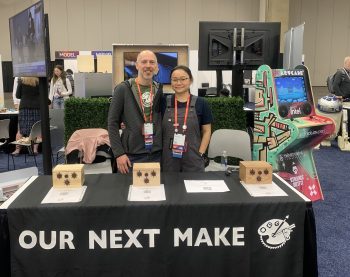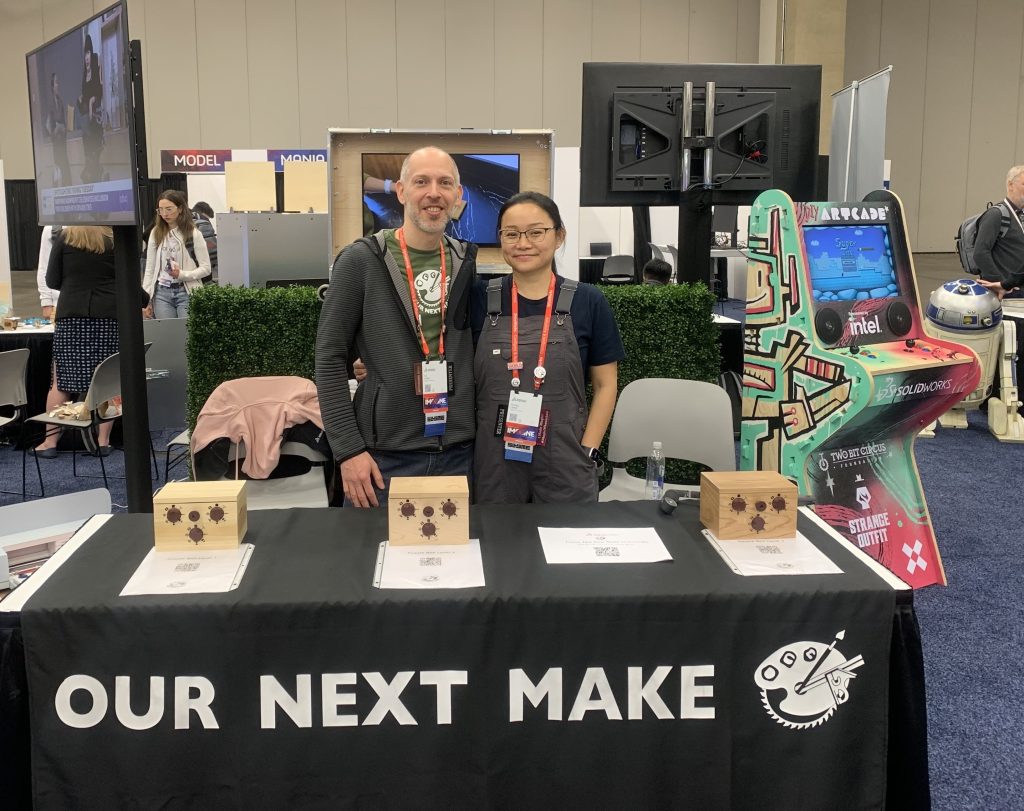
Written by: Mohammad Al Amin Mohd Jahaya, Journalist, AOPG.
Although 3D printing has recently emerged as a relatively new technology, its discovery and invention originated in 1981, when Dr Hideo Kodama pioneered the first rapid prototyping machines utilising a resin polymerisable by UV light. It was not until 1986 that the first patent for Stereolithography (SLA) was filed by Chuck Hull. In 1988, Carl Deckard followed suit, securing a licence for Selective Laser Sintering (SLS), with Scott Crump’s patent filing for Fused Deposition Modelling (FDM), also known as Fused Filament Fabrication (FFF), the following year.
In the subsequent year, 1990, and onwards, there was rapid and exponential growth in the early 3D printing industry. Numerous 3D printing companies were founded, and the exploration of new additive manufacturing technologies flourished. However, it was not until 2006 that the first SLS printer became commercially available.
Fast forward to today, the 3D printing industry is emerging as one of the fastest growing sectors, with its products finding applications in various fields ranging from medicine to engineering and architecture.
This dynamic evolution was vividly showcased at the 3DEXPERIENCE World, an esteemed annual gathering orchestrated by Dassault Systèmes, where visionaries, engineers, manufacturers, and industry trailblazers convene to celebrate creativity and foster groundbreaking advancements.
At this transformative event, the pulse of the 3D industry beats with fervour, driving engagement, connection, and learning. It serves as a testament to the boundless potential that lies ahead, propelling the industry toward unprecedented heights. It was within this vibrant atmosphere that we seized the opportunity to converse with Chin Loo Lama, Director of User Experience at SolidWorks, delving into her profound insights on the trajectory and evolution of the 3D landscape.

The Importance of Intuitive, Seamless UI
According to Chin Loo, one of the most notable key changes in the 3D industry is the improvement of the 3D tool interfaces. Back in the early days of 3D printing, most of the 3D tool interfaces were very cluttered and complicated to navigate through.
However, Chin Loo explained that this is no longer the case. Most 3D tool interfaces nowadays are user-friendly and easier to navigate. This not only streamlined the 3D printing workflow, lessened frustration and increased efficiency but also encouraged others to jump in and have a try at 3D printing themselves, whether as a career or a hobby.
She further reiterated by sharing an example of how previously before SolidWorks added search capabilities into their 3D tool, users had to spend minutes navigating through checkboxes to determine which options were necessary. The addition of search capabilities remediates that struggle, thus improving users’ experience and workflow.
The simplification of 3D tool interfaces also helped lower the bar of entry, facilitating smoother and effective onboarding experience for new and inexperienced 3D engineers, technicians, designers, or modellers. This, in turn, increases the number of professionals within the industry, fostering the growth of the 3D industry and enabling the exploration of additional market opportunities for 3D printing products.
As the conversation with Chin Loo unfolded, she elucidated the potential synergy between AI and 3D printing, despite the caveats that come with it, namely data privacy and transparency.
For that reason, according to Chin Loo, SolidWorks has launched a few AI-driven assistance tools in their cloud apps, which have aided in automating and expediting 3D designing and printing procedures.
Recognising the enormous potential shown by the AI-driven assistance tools, SolidWorks intends to further explore and harness their capabilities to significantly reduce the required steps, for example from 10 to 2, thus improving the 3D printing technology’s productivity and efficiency.
3D Printing Industry: Pushing the Boundaries with Innovations
The 3D printing industry has made significant strides over the last few years, according to Chin Loo. She explained that just a few years ago 3D printing technology was limited to fabricating small parts and moulds, utilised only in specific industries.
However, today’s 3D printing technology not only enables the production of functional parts and materials thanks to SLS but is also utilised by various industries, ranging from manufacturing and engineering to sportswear. According to Chin Loo, the significant advancements in 3D technology capabilities are also driving new innovations such as fab-lab-in-a-box, a production of collaboration between the Fab Foundation and the Center for Bits & Atoms at MIT. The fab-lab-in-a-box is a compact platform installed with Dassault Systèmes software and equipment necessary for the design and creation of digital fabrication.
Although the fab-lab-in-a-box developed by MIT is still in its early stages and its primary aim is to introduce and expand access to the 3D industry within learning communities such as technical schools, it possesses the potential to become the next startup business opportunity owing to its affordable cost and portability.
In addition to that, Chin Loo also shared that re:3D, a 3D printing and social enterprise, is currently developing a large-format 3D printer that is capable of fabricating fully functional large-scale parts such as soccer goals that can immediately be used.
These advancements and innovations demonstrate that the 3D printing industry is poised to become the next disruptive technology—a game-changer that will revolutionise industries, particularly the manufacturing industry. Will it be as disruptive and generate as much buzz as when generative AI first emerged? Only time will tell.
 (0)
(0) (0)
(0)Archive
- October 2024(44)
- September 2024(94)
- August 2024(100)
- July 2024(99)
- June 2024(126)
- May 2024(155)
- April 2024(123)
- March 2024(112)
- February 2024(109)
- January 2024(95)
- December 2023(56)
- November 2023(86)
- October 2023(97)
- September 2023(89)
- August 2023(101)
- July 2023(104)
- June 2023(113)
- May 2023(103)
- April 2023(93)
- March 2023(129)
- February 2023(77)
- January 2023(91)
- December 2022(90)
- November 2022(125)
- October 2022(117)
- September 2022(137)
- August 2022(119)
- July 2022(99)
- June 2022(128)
- May 2022(112)
- April 2022(108)
- March 2022(121)
- February 2022(93)
- January 2022(110)
- December 2021(92)
- November 2021(107)
- October 2021(101)
- September 2021(81)
- August 2021(74)
- July 2021(78)
- June 2021(92)
- May 2021(67)
- April 2021(79)
- March 2021(79)
- February 2021(58)
- January 2021(55)
- December 2020(56)
- November 2020(59)
- October 2020(78)
- September 2020(72)
- August 2020(64)
- July 2020(71)
- June 2020(74)
- May 2020(50)
- April 2020(71)
- March 2020(71)
- February 2020(58)
- January 2020(62)
- December 2019(57)
- November 2019(64)
- October 2019(25)
- September 2019(24)
- August 2019(14)
- July 2019(23)
- June 2019(54)
- May 2019(82)
- April 2019(76)
- March 2019(71)
- February 2019(67)
- January 2019(75)
- December 2018(44)
- November 2018(47)
- October 2018(74)
- September 2018(54)
- August 2018(61)
- July 2018(72)
- June 2018(62)
- May 2018(62)
- April 2018(73)
- March 2018(76)
- February 2018(8)
- January 2018(7)
- December 2017(6)
- November 2017(8)
- October 2017(3)
- September 2017(4)
- August 2017(4)
- July 2017(2)
- June 2017(5)
- May 2017(6)
- April 2017(11)
- March 2017(8)
- February 2017(16)
- January 2017(10)
- December 2016(12)
- November 2016(20)
- October 2016(7)
- September 2016(102)
- August 2016(168)
- July 2016(141)
- June 2016(149)
- May 2016(117)
- April 2016(59)
- March 2016(85)
- February 2016(153)
- December 2015(150)
